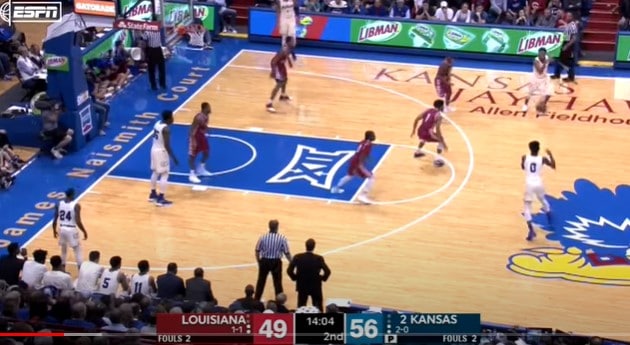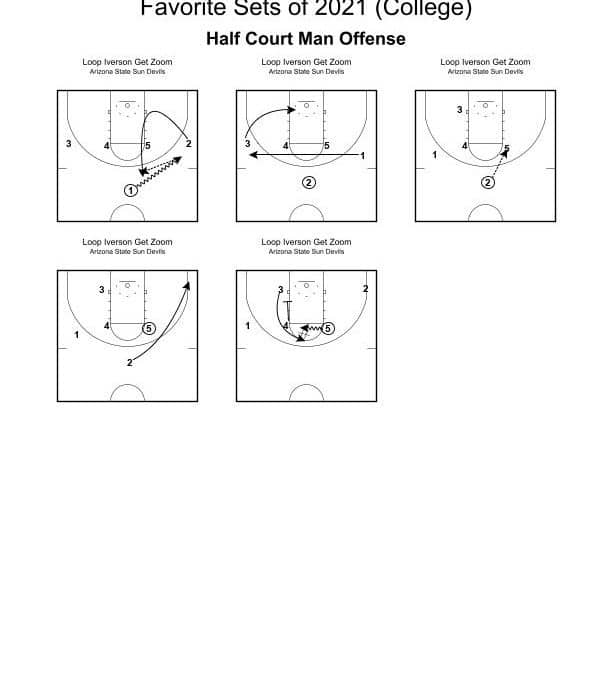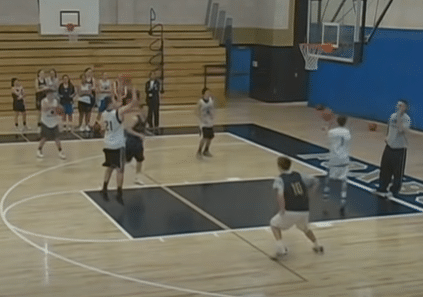Baylor PNR Offense v Gonzaga PNR Switching Defense by Chris Filios
How was Baylor able to take advantage of Gonzaga switching ball screen switching defense? They utilized Boomerang action to attack the mismatch.
Gonzaga had great success throughout the tournament switching the pick and roll 1 through 5. Until the final four, teams had not been able to take advantage of what was perceived as a mismatch- Gonzaga’s 5’s on the other team’s guards. UCLA was able to find some success through slowing the pace, getting the switch, backing the ball out, and attacking 1 v 1…mainly with Juzang. The difference between UCLA and Baylor was both the movement and the difficulty of shots taken.
UCLA was fairly stagnant in their action while seeking the switch. Once Gonzaga switched, the guard would dribble the back out. The rest of the offense stood as the guard took his time sizing up the Gonzaga big. Then attacked and often times had to take (and make) a contested shot.
Baylor attacked with player and ball movement. While they weren’t necessarily seeking out the switch to iso attack, they certainly looked to take advantage. Instead of dribbling the ball out, sizing up the defender, and everyone else watching while the guard attacked, Baylor “ping-ponged” the ball back and forth and attacked quickly before the defense could set. This action is commonly known as Boomerang action.
Click here to download the action below
Boomerang action is where the guard comes off the ball screen and the defense has switched, the ball handler passes the ball to a teammate, spaces into a better attacking position, and receives the ball back ready to attack the mismatch. The ball is passed back and forth quickly just like a boomerang.
Why use the Boomerang instead of just dribbling back out and attacking? Drawbacks of the back out dribble:
- A simple one…they miss an opportunity to hit the man on the roll for a lay-up or a high low pass on the post-up.
- The ball has stopped moving and the offense has allowed the defense to achieve one of its primary goals in switching- kill ball movement and slow down the offense.
- Due to the lack of ball movement, the defense is loaded in their proper defensive position and can make it more difficult for the guard to make a play. They can load to the ball and dictate where they want the ball handler to go (with the bounce or the pass). Now the defense can dictate who is going to take the shot.
Positives to the Boomerang:
- By throwing ahead, you can take advantage of an open roll man or throwing the ball high low into the post against the mismatch.
- The throw ahead creates ball movement…and when there is ball movement, there is player movement. On the dribble back, the defense does not have to shift and can load into help positions against the iso. Against the throw ahead, the defense must shift. This means that on the give back to the guard, he can quickly attack without the defense being in proper position.
- More options for the guard. When the guard goes to throw the ball ahead off the ball screen, what is the first thing the defensive big is going to do? He is most likely going to drop. The big may drop either to help negate the hi-lo post pass or out of poor habits. How often does the 5 practice guarding on the perimeter (on or off the ball)?
- Catch and shoot. Since the big drops down (either to help prevent the hi-low pass or out of poor defensive habits), on the giveback, 1 can look for a catch and shoot opportunity if the big does not close back out.
- Attack the big on the closeout. On the giveback, the big will be forced to close out and take away the jumper. On the closeout, the guard can rip and quickly attack off the bounce. By attacking quickly off the catch, the ball handler is at an advantage as the defense has not had a chance to properly rotate into help. The ball handler will have all sorts of options at his disposal- pull-up, attack rim, drive and kick, foul pressure on the big, etc.
Baylor used this to great success. Of course, it helps to have 3-4 elite-level guards. While Gonzaga had seen many good teams, many good guards, and had success guarding mismatch isolation situations before, they had not faced a team with multiple guards this athletic and this good (Mitchell, Butler, Teague, Flager).





0 Comments